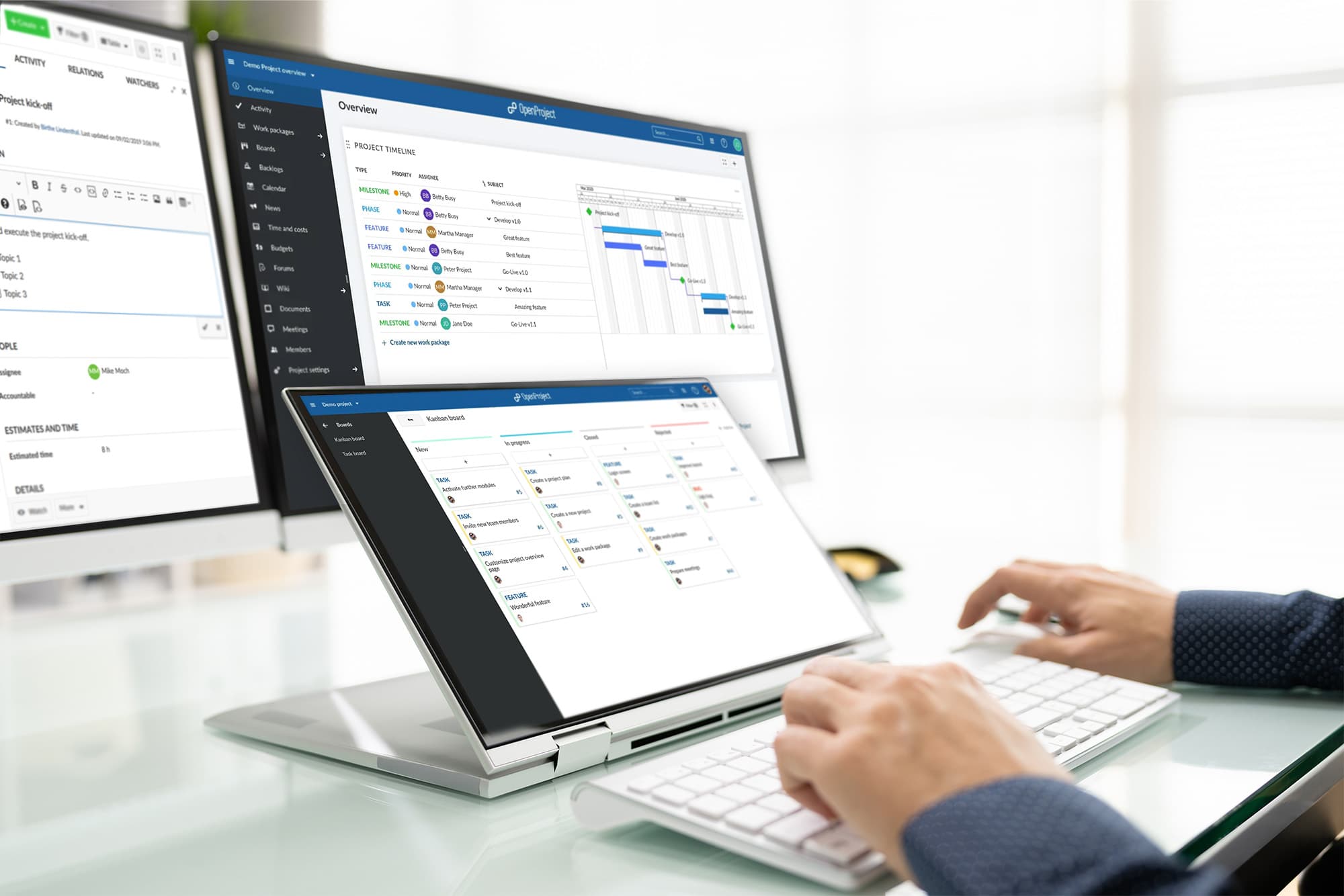
What is hybrid project management?
Definition of hybrid project management
Hybrid project management combines elements of waterfall and agile methodologies to make the project management approach best suited for an individual use case. A pure agile or waterfall approach can limit the project manager and hence with a hybrid approach they want to get the best of both worlds. Thereby, no fixed rules exist, hybrid project management allows to mix and match elements from agile and waterfall as needed.
Waterfall project management
Waterfall is also often called traditional project management. It follows the principle of plan first, execute second, thereby following a 5-phase-process:
- Project conception and initiation
- Project definition and planning
- Project launch or execution
- Performance and control
- Project close
It is a one-step-after-the-next approach in which one phase after the other is completed while never revisiting a previous phase.
Agile project management
The agile methodology is an iterative approach, adapting to changes along the way through iterations. By being an adaptive approach, the project is broken down into smaller projects managed by cross-functional teams. Customer and stakeholder feedback are integrated regularly to increase the chance for a successful launch. Its underlying principle is responding to change over following a plan.
Why hybrid project management?
To effectively deliver a project, you have to choose the right approach. Agile methods can add to a faster delivery, meeting changing requirements and environment and taking customer feedback into consideration. Waterfall project management gives you a clear, efficient plan and structure for project delivery. Marrying both can give you an advantage for your project’s success.
Benefits of hybrid project management
By choosing elements of waterfall and agile, you are trying to get the best of both worlds. Overall, a hybrid approach allows you to:
- stick to budget and timings
- focus on improvements by allowing iterations
- respect your organization’s culture
- keep your team motivated by using an approach that fits the team and the project
- have the most innovative outcomes through combination of both planning and emergence
However, make sure to communicate well with the project team and stakeholders to develop a mutual understanding of your project management approach. Moreover, make sure you are experienced in both agile and waterfall project management to be able to confidently combine the models.
When to use a hybrid approach?
An agile approach is best suited for complex and uncertain projects. On the other hand, the waterfall approach is the most efficient for standard, recurring projects with a clear process. If you are dealing with a broad, complex project you might want to use an agile approach.
However, large companies can pose a challenge to the implementation of agile project management. The larger the company, the more processes are typically implemented and make it more difficult to break through for an agile team. The organization and the project team have to be ready for this approach. From an organizational perspective, the agile team itself needs to have its own space where it is not bound to the usual way of working with strict procedures. Also, agile team members that have the right open mindset to work differently.
Especially for those large-scale organizations with rigid processes, a hybrid project management approach presents an opportunity to improve project outcomes while still maintaining the organizational controls and structure.
Also projects with an aggressive delivery schedule and the goal of rapidly developing a working solution, benefits from a hybrid project management approach. It will guarantee the delivery on time as well as a functioning product.
Overall, you could say that all projects with a short-term focus on product features and a long-term focus on the final result will benefit from a hybrid approach.
Implementation of hybrid project management
Most commonly, hybrid project management would be implemented in the following way: The project is planned in a traditional “waterfall” way, thereby scope and requirements are defined upfront. Then, development and testing are done with agile methodologies, i.e. sprints. For these sprints, planning is done in terms of prioritization of work packages. Stakeholders will give feedback after sprints to then optimize and reiterate if necessary.
Before implementing a hybrid project management approach, make sure to:
- Define your project and what to use agile and waterfall features for
- Create process roadmap for the team and stakeholders
- Regularly review project management process
- Make adjustments if necessary This way, your team and stakeholders are on board and will help you make the project a success.
Hybrid project management enabling software
OpenProject integrates waterfall and agile features and is thus the ideal tool for hybrid project management. E.g. create your Gantt chart to plan the timeline for your project and use a Kanban board to visualize and execute tasks.


